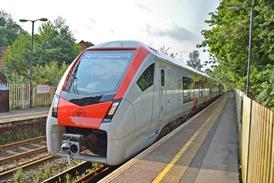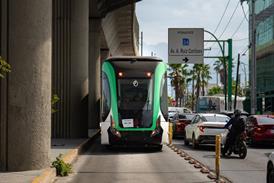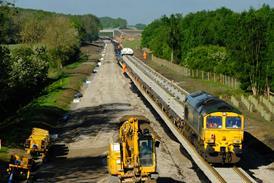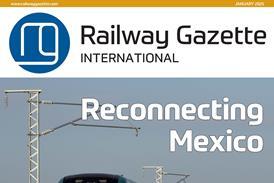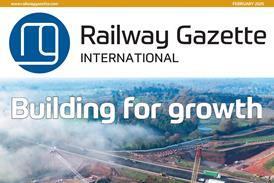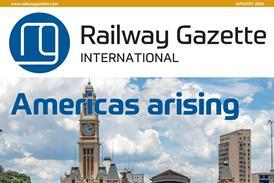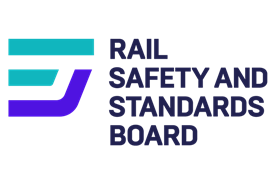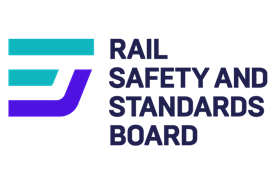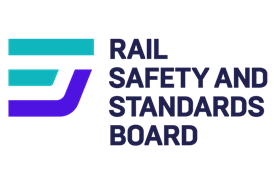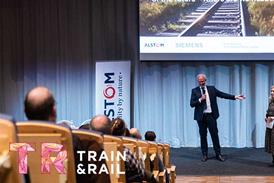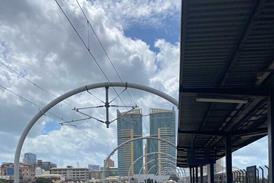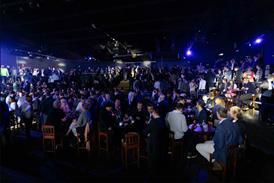INTRO: In a year of stabilisation, the question remains whether there should be fewer players in the rolling stock industry to provide a worthwhile investment for shareholders. Reviewing the supply industry over the past 12 months, Andrew F Saxe* wonders if others may follow the lead given by Fiat in the face of low prices caused by continuing overcapacity
DID THE most important comment on the rolling stock industry this year come from Paolo Fresco, Chief Executive Officer of Fiat SpA? And should his opposite number at DaimlerChrysler, Jürgen Schrempp, be listening? Facing a rapidly-consolidating automotive industry, booming e-commerce opportunities, and increasingly demanding shareholders, Fresco decided to sell 51% of Fiat Ferroviaria for 150m euros to Alstom Transport, who also acquired a right of first refusal for the remaining 49%.
It seemed the right move for both parties. From Fiat, Alstom gains the proven technology it lacks and needs, as well as an entrée to the Italian market. From Alstom, Fiat gains a chance to divest itself of an under-performing asset.
Fiat Ferroviaria’s revenue has held steady for several years, but profitability has slipped, from 6·7% in 1997 to 3·5% last year (see Table I). The subsidiary neither depressed Fiat’s income nor represented a wise investment of shareholder capital. Selling to Alstom helps clear unproductive assets off the balance sheet (there are plenty of others at Fiat, and the railway business has by no means been the worst performer) and generates cash for the core auto business and Altanet, the new telecommunications venture with Telefónica of Spain.
No doubt unique features of the Italian market influenced Fiat’s move. Orders have been relatively flat in Italy, Fiat was not well positioned to penetrate other markets without a partner, and its principal rolling stock customer, Italian State Railways, remains plagued with difficulties. These unique considerations aside, Fresco’s decision remains significant. At some level, Fiat must have felt it was bound to be more of the same - modest, if not disappointing results from the rail supply sector. So what was the point? Why bother? Why continue to tie up shareholder capital?
Is it worth it?
It is a question every responsible CEO should, and most likely does, ask. It is a question for Laurent Beaudoin at Bombardier, Jack Welch at General Electric and Heinrich von Pierer at Siemens, as well as Alstom’s Pierre Bilger and Jürgen Schrempp of DaimlerChrysler. Would it be healthier for the industry overall if every CEO made this assessment and those that did not see the path to acceptable profitability decided to bow out? Could it make the game all that more appealing for the remaining players who have been suffering for years now from overcapacity and falling prices?
Many have argued that the industry’s troubles have been exacerbated by subsidies keeping too many factories open, when a normal industry shake-out would have stripped out surplus capacity a long time ago. Sometimes governments provide the subsidies, as in the case of DWA in the former East Germany. Sometimes shareholders do, as at Siemens where millions of marks were spent to buy and then restructure the Duewag factories. Alstom shareholders saw profits from France routinely used to offset several years of losses in Spain. And most dramatically Daimler-Benz (now DaimlerChrysler) shareholders have been paying the price to keep the Adtranz dream going. Is it worth it?
For some players, the rail supply market has paid handsomely. John Rice, the President of GE Transportation Systems, wrote in the GE 1999 annual report, ’Transportation Systems had a terrific year in 1999 - a record year that saw a full-throttle, all-out team effort to produce a record 911 locomotives, as well as a double-digit increase in earnings.’ While GE Transportation Systems results are buried within the Industrial Products sector and precise numbers are not available, one doubts that GE CEO Jack Welch would have allowed Rice to have written this without the numbers to back it up.
Profits are falling
But GE is fairly unique in the rolling stock industry. North American wagon builders had been highly profitable in the past few years (RBR99 p16), but after steady increases US orders collapsed from a high of 86000 wagons in 1998 to 41000 in 1999. Greenbrier, despite its purchase of Adtranz’s Siegen factory in Germany, chose to cut 500 jobs in North America. Trinity Industries too has felt the effects of the downturn on its share price, and analysts have downgraded both companies.
Other companies which had been performing well have also seen their results slip. One example is CAF, the plucky Spanish train-builder. In 1999 CAF added to its list of wins around the world, including snagging an LRV order for Sacramento despite the presence of a Siemens factory in California. Exports account for 61% of CAF revenue, which jumped 9% in 1999. But the order book rose less than 1%, and income before tax subsided slightly from 4% in 1998 to 3·7%. CAF has made impressive gains in recent years, raising its order book and revenue to their highest levels ever. Yet, like Fiat Ferroviaria, profitability has been trending downward, however slightly, since a 1996 high of 4·8%.
And what of the francophone high-flyers of the industry, Bombardier and Alstom? Bombardier Transportation has had a few embarrassments this year. The company announced cuts of more than 1000 jobs in Germany, and the roll-out of Amtrak’s long-waited Acela high-speed train has been delayed by at least nine months. In the plus category, the firm enjoyed a few large wins, including a C$600m order for 252 double-deck EMU cars for Netherlands Railways, and 200 passenger coaches for Chinese Railways with an option for 300 more. In 1999-2000 revenue jumped an impressive 16% over 1998-99, which was already at an historic high after the integration of DWA. However, income before tax was flat at 5%, despite the jump in revenue, and the order backlog declined from C$9·3bn to C$8·3bn, partially due to currency fluctuations. Results for the first quarter of 2000-01 did not brighten the picture. Revenue was down 9·3%, and profitability slipped from 5·2% to 5·1% compared with the first quarter last year.
Alstom presents by far one of the brighter pictures. Revenue in 1999-2000 also jumped 16·4% from the year before. In contrast to Bombardier, Alstom could also report that orders received were also up by 12·6%. Still, here again, slippage was visible in profitability. Last year, Alstom became the industry’s largest company and was able to boast a 6% return on sales (operating income), a triumphal double win for the Anglo-French company. This year, operating margin declined to 5·6%.
Muted outlook
Elsewhere, turnarounds have occurred but prospects are muted. AnsaldoBreda has finally emerged as a unified company and succeeded in reducing staff numbers from nearly 7000 in 1998 to 5900 in 1999. Operating margin actually rose from 2·9% to a somewhat more respectable 3·4%. Yet revenue slipped from 2·2bn to 1·8bn lire and, more worrisome, incoming orders plunged nearly 1bn lire from 1·96bn in 1998 to 1·05bn in 1999. Restructuring at AnsaldoBreda, it appears, will have to chase declining sales.
Siemens Verkehrstechnik staged a dramatic turnaround. In 1998 the company lost a whopping DM745m, CEO Wolfram Martinsen was shown the door, and quiet but effective Herbert Steffen was brought in to either sell the company or save it. Though joint venture talks with Bombardier broke down, Steffen boosted sales 15% in 1999 and narrowed the loss to DM122m. Progress continued in the first half of 2000 as revenue soared 40% on the year before and Steffen booked DM41m in profit - no doubt to the relief of Siemens AG CEO Heinrich von Pierer. Steffen’s impressive performance notwithstanding, the profit represents 2·3% on revenue despite the sharp increase in the latter. The growing order book bodes well for the division going forward, but von Pierer must ask whether he ever expects VT to report the pre-tax earnings of his other divisions, like Automotive & Drives with 11·3% or Information & Mobile Communication’s 12·7%, to say nothing of the 25·9% returns of Infineon.
It is unclear whether the turnaround is taking effect at Adtranz, as precise figures are hard to come by in the DaimlerChrysler results. Adtranz is hidden in the ’Other’ category, but what we know is that in 1999 Adtranz comprised 62% of Other revenue and that operating profit last year for the segment sank dramatically from a loss of 130m euros in 1998 (-3·7%) to 399m euros (-6·8%).
How much of that was down to Adtranz, and whether losses at Adtranz were even higher, wiping out profits in the segment’s other components, only DaimlerChrysler knows and it chooses not to share such details with us.
Other also looked unwell in the first quarter this year, swinging from +74m euros in 1999 to -73m euros this year. Sales at Adtranz for the quarter were essentially flat (708m euros), although incoming orders jumped an impressive 38% to 618m euros.
Adtranz CEO Rolf Eckrodt has a bold restructuring plan to trim significantly the far-flung Adtranz holdings. He sold the plant in Siegen, and announced that Amadora in Portugal, Nürnberg in Germany and Oerlikon in Switzerland would close by the end of 2000, followed by Pratteln in Switzerland and Strømmen in Norway in 2001. He expected the 23700-strong workforce to be reduced by 3000 by the end of 2002, and the first quarter 2000 report showed 1100 fewer workers than a year before. It is yet to be seen whether Adtranz will be able to close all the plants it wishes as unions and local politicians put up resistance. And it is unclear whether the company will make the profit demanded by Schrempp this year.
Overcapacity still a problem
This quick survey shows some progress in a few companies, yet no steady path to a better, more profitable future. There are varied theories as to why some companies have problems and others have not, and this columnist has discussed many of them over the past six years. Some companies acquired too many firms too quickly and failed to integrate them properly. Adtranz and Siemens were guilty of this. Others, like Alstom, made smart calls by moving aggressively into maintenance. Firms like Bombardier, despite growing internationally, kept their focus on mechanical manufacture and big orders, which shielded them from various troubles. Others like CAF just ran tight operations and refused to rely on the domestic market. CAF has stayed profitable throughout.
These prior discussions certainly explain the different results, but have missed an important point. Even the best performing companies, Bombardier and Alstom, never reported results as high as their sister companies outside the railway sector. Furthermore, they have had problems maintaining, let alone further improving their results. And other companies have experienced several cycles of restructuring.
On a global scale, the industry experienced a major shock in 1990. The huge production capacity of eastern Europe was added to the world industry when the Iron Curtain fell. Shortly afterwards, orders from the former Soviet bloc, especially Russia, collapsed, creating staggering levels of overcapacity. This was temporarily mitigated by a series of piecemeal restructuring exercises, and by large orders from major customers like German Railway. The continent also experienced an explosion of orders for high speed trains. Those orders proved insufficient to take up the slack left by the Russian market, and prices fell sharply in the mid-1990s. Suppliers have simply not been able to overcome the problems caused by the fall in prices. And now, many of the major orders have been completed and a relatively dry period may have begun.
Certainly suppliers need restructuring programmes to improve their results, but observers should expect marginal rather than dramatic improvements.
Only a few options exist to change the industry significantly. One would be a breakthrough in the cost of manufacturing or maintenance driven by new technology. The internet may provide some opportunities.
Another is an explosion of demand from a major market. Perhaps China will be willing to import trains directly and in large numbers, and perhaps gridlock in the United States will cause the government to begin a programme of rail expansion similar in scope to President Eisenhower’s famed highway programme of the 1950s. Perhaps, but not likely and not immediately.
Finally, a major player, dismayed by unacceptable results, could finally fold up shop, removing significant amounts of capacity and helping a recovery of prices for those who remain in the industry and stay committed. Something for the CEOs to think about.
Table I. Key financial results of
selected railway suppliers
TABLE: Year Revenue Income Revenue as % per employee
euro m of sales euro 000
Alstom* 1998-99 4 092 5·6% 146
Adtranz 1999 3 600 ? 155
AnsaldoBreda* 1999 946 3·4% 161
Bombardierñ 1999-00 2 176 5·0% 136
CAF 1999 307 3·7% 107
Fiat* 1999 375 3·5% 206
Siemens* 1998-99 2 980 -2·1% 205
Greenbrier* 1999 578 10·1% -
* Operating margin (earnings before interest &taxes)not net incomeñIncome before unusual items and taxNote: Financial reporting varies and profitability cannot be compared directly
Table II. Market share of mechanical work for orders placed since 1990 (%)
TABLE: Adtranz Siemens Alstom Bombardier Italians Japanese Russians Chinese Other
High Speed 11 7 40 14 13 11 0 0 3
Metros 18 7 19 17 2 18 6 0 14
LRVs 15 20 10 14 6 4 13 0 17
EMU/DMU 21 11 16 14 2 13 5 0 17
Commuter 6 3 4 63 1 6 0 0 17
Inter-city coaches 3 1 0 18 0 0 7 65 5
* Andrew Saxe is an executive with Andersen Consulting Strategic Services, and a regular commentator on the world’s railway supply industry. He can be contacted in Boston on +1 617 454 4372 or at Andrew.F.Saxe@ac.com
CAPTION: Adtranz handed over the first of 400 dual-system Class 185 locos to DB Cargo on July 11 at its Kassel works. Class 185 represents the biggest single order for
locomotives in Germany for
the last 50 years
CAPTION: The first driving car for Virgin Cross-Country’s Voyager DMUs arrived at Bombardier Transportation’s Wakefield plant on July 6 following assembly at Brugge
Is it time for someone to leave the field?
In his annual review of the rolling stock supply industry, Andrew FSaxe suggests that major players struggling to make a profit might consider leaving the rail sector. Fiat’s recent decision to sell 51% of its rolling stock business to Alstom may be the prelude to its withdrawal from this sector, where low prices still form a barrier to sustained profitability. With company restructuring programmes and factory closures usually contested by unions and local politicians, and the emergence of major new markets uncertain, Saxe proposes that only the complete withdrawal of one of the major builders would solve the continuing problem of overcapacity
Est-ce le moment de quitter le terrain?
Dans son rapport annuel sur les livraisons de matériels roulants, Andrew F Saxe laisse entendre que les acteurs principaux qui se battent pour réaliser des bénéfices pourraient envisager de quitter l’activité ferroviaire. La décision récente de Fiat de céder à Alstom 51% de son activité matériel ferroviaire est peut-être un prélude à son retrait de ce secteur, o

